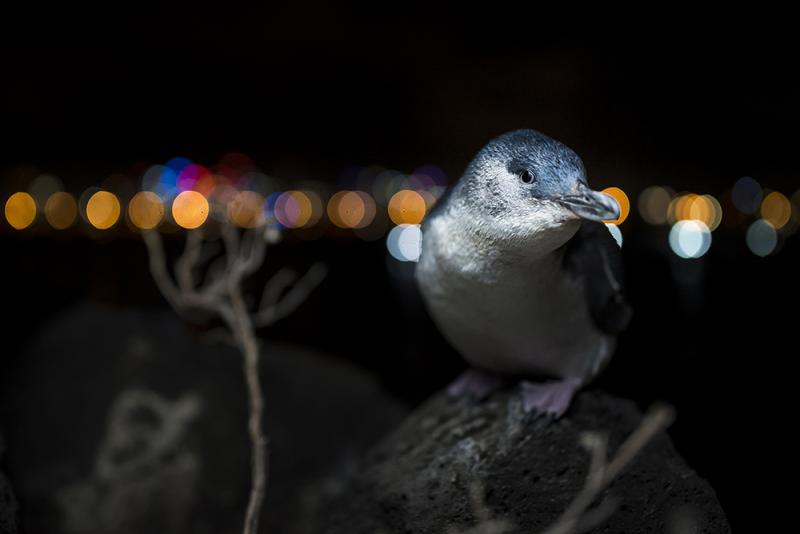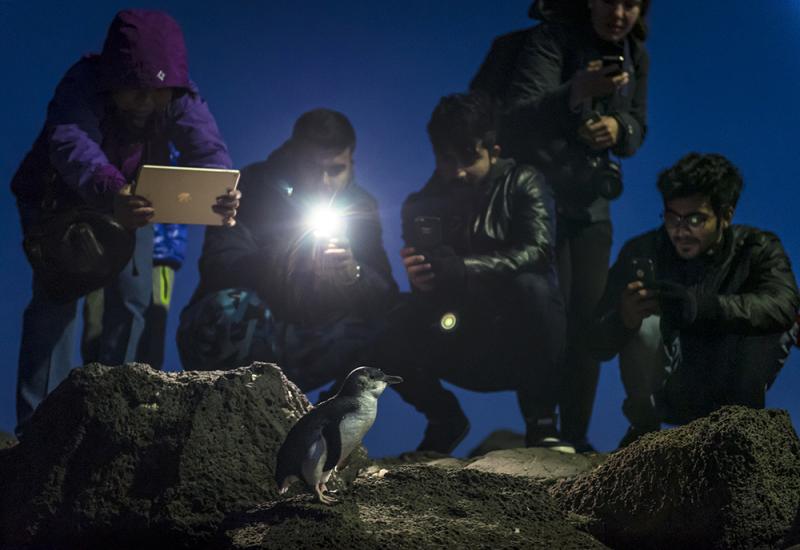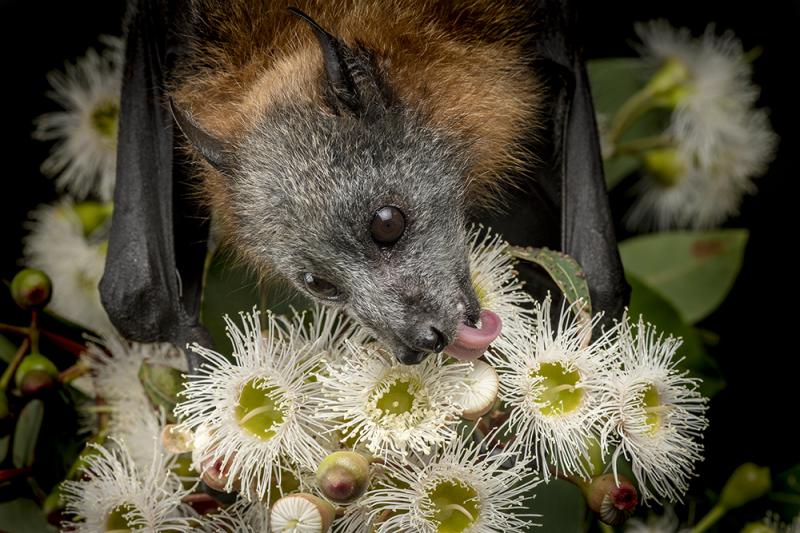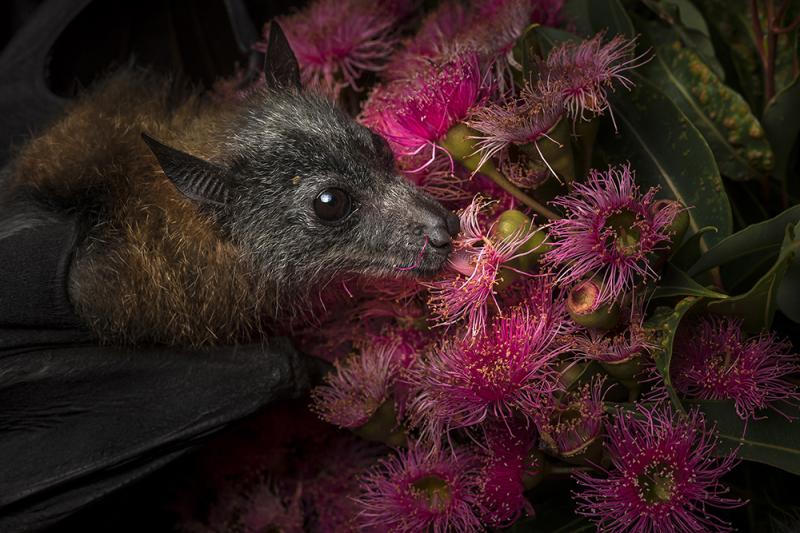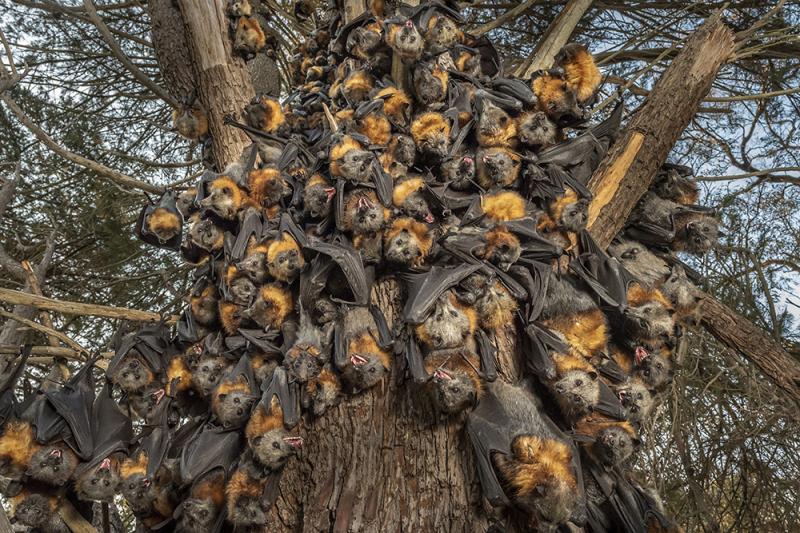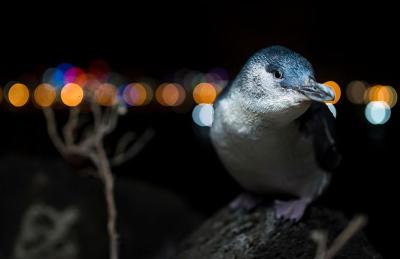
Doug Gimesy Wildlife Photography advice - Wildlife Australia Guide
Gallery
URPoint Details
WHEN I STARTED OUT as a wildlife and conservation photographer, I never used additional lighting. Over time, I started playing with flash here and there, adding one light, then two.
As my skills improved, I began using it more and more, but always during the daytime. Why? I simply liked how it felt, no other reason.
Then about six years ago, I was photographing the little penguins of Melbourne, trying to capture their silhouette in the dark against an evening city skyline. Not far from me were a lot of tourists trying to photograph them before they entered their burrows. Some were using on-camera flashes, others just their mobile phones, with the built-in flash going off.
There were signs that said ‘No flash’, and the volunteer guides did what they could to educate the public, however the relentless explosions of light continued throughout the evening. Bothering me in the distance, I could only wonder what it must have been like for these little penguins close up.
What I saw that night started me thinking about the impact a photographer’s lighting could have on wildlife – whether using flash in the field or even on captive animals.
Having been trained as a bioethicist, I really wanted to make sure I was doing the ‘right thing’. And having a zoology degree, I wanted ‘the right thing’ to be evidence-based.
I hoped I could develop a simple check list to guide me, but as I delved deeper, I found little research to draw on (more on that later), and even defining ‘the right thing’ was a challenge.
For example, could it be justifiable to potentially stress an animal if the resulting image might significantly help the species? Many field researchers capture, tag and release animals, knowing this process stresses the individual animal, in the hope of gaining knowledge to help the species.
Did working with scientists and researchers (with ethics approval), provide some type of moral stamp of approval?
With all these thoughts rattling around in my head, I decided the first thing I needed to do was understand exactly what negative impacts can come with using additional lighting.
Potential negative consequences
To figure these out, I read articles and spoke with academics and zoo-based wildlife welfare experts, and discovered there were generally three types of impact I should be considering – the physical, the emotional, and the behavioural – and that these can sometimes influence each other.
For example, many people realise how car lights can stun animals, stopping them in their tracks, as ‘a large threat’ bears down on them.
But not everyone knows, for example, that some penguins will abandon their nests if they feel stressed; this emotional response resulting in a physical impact (i.e. the death of a chick1, 2).
Indeed, prolonged and repeated stress takes a significant physiological toll on many animals like it does us, ranging from immunosuppression, reduced reproduction, and ultimately shorter longevity.
And of course, different lighting on different animals and in different situations can result in very different consequences.
One example is the Australasian gannet (Morus serrator) that keeps its eyes open when penetrating the water to catch food, adjusting focus instantaneously3. Knowing this, is it not okay to use a flash when they dive into darker water – potentially blinding them and preventing their hunt – but it is okay as they return to the surface, knowing the latter is no more intense than mid-day water reflection?
Conversely, as platypuses (Ornithorhynchus anatinus) close their eyes when diving4 (using electrical receptors in their bills to find food), is it okay to use a flash at night when they are underwater, but not when they are above it?
And what about the colour of the light? Microbat species like Myotis and Plecotus don’t seem bothered by red light (possibly because they don’t see it as bright, if at all), so is it okay to use a flash if I put a red gel on? 5
I’ve always intuitively disliked the use of (white) flash on nocturnal gliding mammals. With their super-light-sensitive eyes, what must it be like to have a flash blasted mid-flight, blinding them while attempting a landing? What could go wrong?
Interestingly, I learnt one bit of information that my diving friends may love or hate.
An Australian study recently demonstrated that the use of flash had no negative impact on seahorses (Hippocampus), because of what they called the ‘ripple effect’. When sunlight focuses through waves or wavelets on a sunny day, it causes very short duration high intensity bursts of light (up to 100 times stronger than calm days) just like a flash. Because of this, the use of flash doesn’t bother them or cause a stress response – that’s the good news.
The bad news is the researchers also found that getting close enough to use a flash did stress them6.
What about camera traps?
And what about lighting used with camera traps, especially given we don’t immediately see its impact (if ever at all)? Given camera traps aren’t species specific, could their use on a well-trod trail be fine for one species, but result in another being stressed or avoiding that area to its detriment?
A study in 2004 described a greater than 50 percent decline in tiger (Panthera tigris) capture rates after the first five days7 and one in 2007 reported that kinkajous (Potos flavus) – a tropical rainforest mammal – basically abandoned a branch where a white‐flash camera was aimed8.
Clearly, every case is different, so what’s the solution?
For night photography there are some good alternatives to traditional light sources, such as infra-red or ‘starlight’ cameras, but not all additional lighting is at night, and this technology may not be affordable, appropriate or practical.
So what to do?
So far, I’ve come up with the following 15 questions I ask myself whenever I think about using additional lighting:
- What’s the species’ general temperament?
- What’s the individual animal’s general temperament? (e.g. captive animals may be more used to ‘abnormal’ external stimulus).
- What’s the species’ base light sensitivity? Are they primarily nocturnal, or diurnal animals, or both?
- What’s the species colour-spectrum perception? (e.g. diving animals may be more sensitive to blue light, some animals see in infra-red versus the colour of the light source).
- Does the species have a specific colour sensitivity or insensitivity?
- Will their eyes be open or closed?
- What’s the intensity difference of additional lighting vs ambient light? (i.e. what percentage are you adding?).
- What’s the lighting frequency? (e.g. continuous or flash – as many will become comfortable with continuous).
- How much of the animal’s field of view will the light affect? (e.g. a big soft box placed too close may appear large and scary).
- Is it harsh or soft light?
- What’s the line of sight to the light? (i.e. direct, back, rear, or side?).
- What’s the duration between impacts? (i.e. is it a quick, single attempt or multiple attempts in one session?).
- What’s the frequency of light impacts over time? (i.e. could this animal be impacted over multiple periods by multiple people?).
- How significant is the consequence especially vs benefit of image? (e.g. slight stress, disturbance, injury, or potential….?).
- What can I do to reduce the impact of additional lighting (e.g. increase my ISO, don’t use flash at night)?
Is this list the definitive checklist? No. Is it evidence based? Some.
But most importantly for me, what it does do is help me think more deeply about doing ‘the right thing’ when using additional lighting, by giving me a framework to reflect upon and make the best considered choice.
And of course, no matter what planning I do, when the day comes, I’ll always pay attention to what the subject is (or is not) telling me and respond accordingly. It’s useful to generalise and ask broad questions, but like all of us, individual animals do have individual temperaments.
Final thoughts
As a conservation and animal-welfare photojournalist, I believe I need to keep creating images that will engage others to care more deeply, and help our natural world.
The use of additional lighting can often be very important for many good reasons, and I’d never suggest it should never be used. I also believe, however, that I must always ask the basic broader questions in all my photography such as ‘am I being considerate’, ‘is there no kinder way to do this’, and probably most importantly, ‘do the means justify the ends?’.
There is a paucity of information about the negative impact of additional lighting in photography, and I know I’ll make mistakes, but when I do use it – and I certainly will sometimes – this journey, I hope, has helped ensure one thing: that I’ll always try to use it with a light touch.
- Type:
- Wildlife
- Establishment year:
- 2023
















